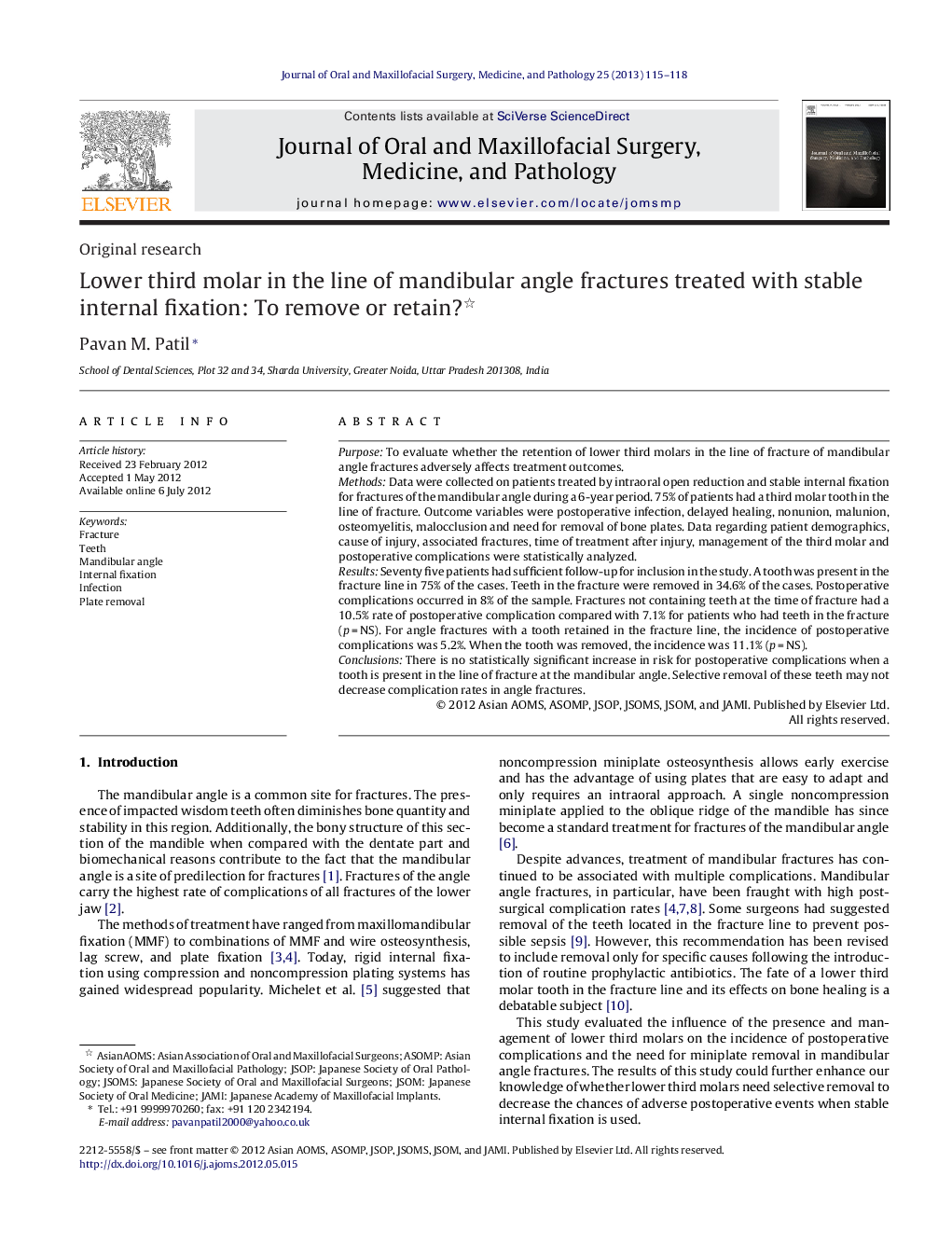| Article ID | Journal | Published Year | Pages | File Type |
|---|---|---|---|---|
| 3159897 | Journal of Oral and Maxillofacial Surgery, Medicine, and Pathology | 2013 | 4 Pages |
PurposeTo evaluate whether the retention of lower third molars in the line of fracture of mandibular angle fractures adversely affects treatment outcomes.MethodsData were collected on patients treated by intraoral open reduction and stable internal fixation for fractures of the mandibular angle during a 6-year period. 75% of patients had a third molar tooth in the line of fracture. Outcome variables were postoperative infection, delayed healing, nonunion, malunion, osteomyelitis, malocclusion and need for removal of bone plates. Data regarding patient demographics, cause of injury, associated fractures, time of treatment after injury, management of the third molar and postoperative complications were statistically analyzed.ResultsSeventy five patients had sufficient follow-up for inclusion in the study. A tooth was present in the fracture line in 75% of the cases. Teeth in the fracture were removed in 34.6% of the cases. Postoperative complications occurred in 8% of the sample. Fractures not containing teeth at the time of fracture had a 10.5% rate of postoperative complication compared with 7.1% for patients who had teeth in the fracture (p = NS). For angle fractures with a tooth retained in the fracture line, the incidence of postoperative complications was 5.2%. When the tooth was removed, the incidence was 11.1% (p = NS).ConclusionsThere is no statistically significant increase in risk for postoperative complications when a tooth is present in the line of fracture at the mandibular angle. Selective removal of these teeth may not decrease complication rates in angle fractures.
